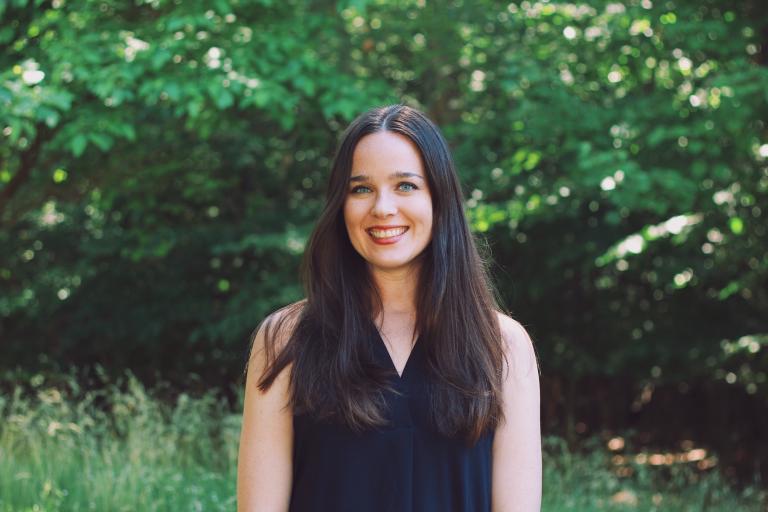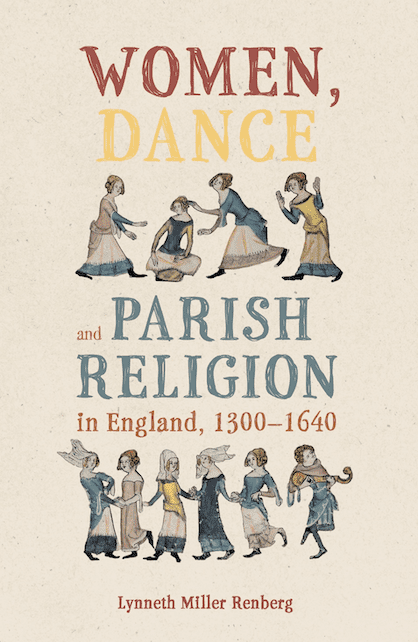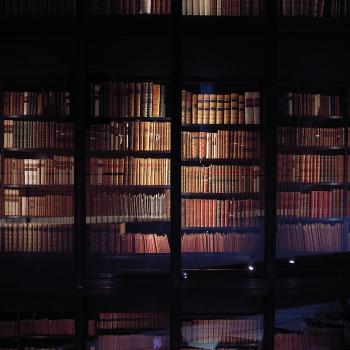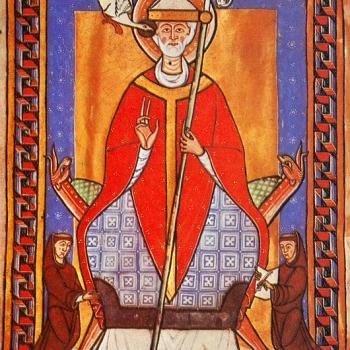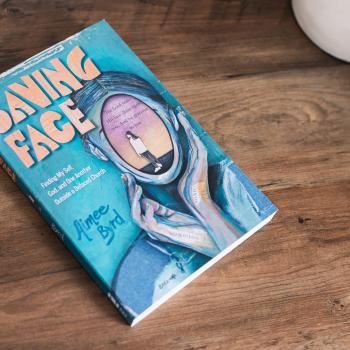Today I am so pleased to welcome back to Lynneth Miller Renberg to the Anxious Bench. Lynneth is an assistant professor of history at Anderson University, with teaching and research interests in gender, dance, emotion, and lay religion. Her monograph, Women, Dance and Parish Religion in England, 1300-1640: Negotiating the Steps of Faith was awarded the Founders’ Prize from the Sixteenth Century Society and is forthcoming with the Boydell Press in November 2022. She is also editor of The Cursed Carolers in Context.
If you venture into any store right now, the pumpkins, skeletons, and broomsticks make one thing clear: for a large portion of the population, it’s spooky season. As the season and the leaves are changing, popular culture leans into all things weird, ghostly, and a little bit fantastic.
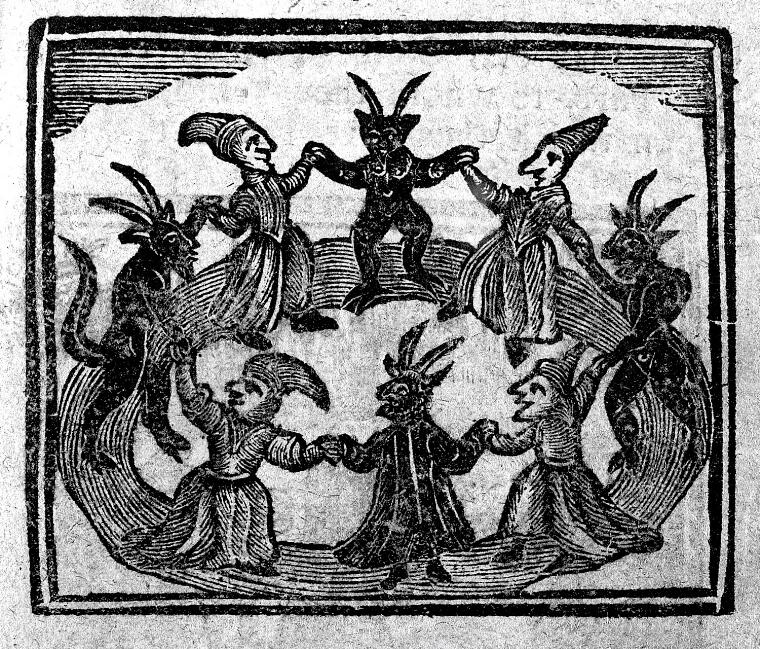
Witches are just one element of this cultural obsession with the otherworldly and frightening, although our modern culture’s fascination with witches looks far different from the early modern fixation on them. Early modern individuals would have found spooky season to be bewildering and alarming rather than amusing, for early modern individuals viewed the figure of the witch as a threat to their wellbeing and responded aggressively. In England, between the 1540s and 1760s, a series of witchcraft accusations and trials led to the deaths of as many as 1,000 women and men, a trend replicated across early modern Europe and in colonial America. Early modern men found witches, particularly female witches, to be threatening. These women were dangers to be contained and eliminated before they destroyed godly men and women. While the presence of numerous witch costumes and decorations indicates that the majority of today’s American public does not share this perspective on witches, some of the traits and actions associate with witches remain the same: broomsticks, black cats, and, notably, dancing.
However, witches were not always associated with dancing, nor were they always quite so spooky.
In fact, medieval witches, at least in some sermon tales, resembled the friendly modern witches that populate October stores and films, bearing little resemblance to early modern witchcraft trials or executions. Sometimes these medieval witches even helped teach medieval laity about faith. One medieval English sermon tale from Robert Mannyng of Brunne’s Handlyng Synnetells of a witch who had a magical bag that flew about and milked cows for her. The bishop of the town had her brought before him to demonstrate this magical flying bag, and then had her teach him the charm she spoke to make it fly. Yet, the bishop was not able to make the bag move: despite repeating the words exactly as she said them, nothing happened.
Why?
According to the witch at the center of the tale, it is because the bishop lacks faith, and faith matters more than words. The sermon then uses this principle– that faith is of primary importance, and that without belief, words mean nothing– to explain to its medieval audiences that they cannot just repeat the creeds but must believe them and let that belief drive their actions. As odd as the tale seems to us, to its medieval English audiences, the tale taught about true faith: not just speaking words but believing what you say. A woman– a witch, no less– demonstrated for medieval laity what true faith looked like and voiced the moral of the exemplum. And conspicuously, this witch fits none of the stereotypes associated with early modern witches: she has no cat or broomstick, and she does not dance.
When did witches start to dance, at least according to early modern authors, and what made that specific action so unnerving?
In part of my new book, Women, Dance, and Parish Religion in England, 1300-1640, I explore when and how witches started to become associated with dance. I also explain how dancing, especially when performed by women, was perhaps even scarier to late medieval and early modern clerics than witches, at least initially.
And in fact, the fears about sacrilegious women in medieval parishes helped shape the stereotype of the witch as a dancing woman who did not fear God.
One sermon tale from the thirteenth-century Liber Exemplorum, another sermon collection, talked about women who “according to the evil custom of the country, wanted to perform their lewd dances,” and made a straw man with which to dance lustfully. As they called out to the doll, asking it to sing with them, “the devil, who had power over the wretched women, replied in a fearsome voice, saying ‘I shall sing.’ And immediately he shouted – not the doll, that is, but the devil within it – and gave forth such a dread noise that several of the women felldown dead.”
As medieval clerics built connections between dancers and devils and between sacrilege and women, these ideas melded into a single stereotypical figure: the dancing woman, rejecting God and in league with the devil.
And, as this 1627 sermon by Isaac Bargrave makes clear, this sin of relationship with the devil was idolatry and sacrilege: “disobedience to God and his Deputes, though it proceed from weakenesse, is a sinne. But if it swell to stubbornnesse and rebellion, it is a great sinne; great as Idolatry, which is the worst kinde of sinne; great as Witch- craft (which in blessed King Iames his phrase) is the worst kinde of Idolatry.” According to these and many other sermon authors, the sins associated with dancing – rebellion, sacrilege, idolatry – are also the sins of witchcraft.
When these sermons were placed alongside the new ideas about witchcraft developed in texts like the Malleus Maleficarum, dancing women who rejected God suddenly became threats not just to themselves and the church, but to their neighbors as well. And oftentimes, fights over dancing led into accusations of witchcraft, as parish leaders and laity fought over what it looked like to live a holy life.
For example, the case of Margaret Wiseman in 1592 in Essex, grew out of the frustration of a small group within the port borough of Maldon with the ardent reformers and Puritans within their community. In Maldon, home of noted Puritan author George Gifford (c. 1548–1600), accusations of magic against Wiseman and against Edmund Hunt (a leading figure of the anti-Puritan faction in Maldon) seem to have acted as outgrowths of bitter parish conflicts over traditional parish festivities. Theological assumptions about sacrilege and holiness, as my book shows, were weaponized not just against the women and men accused of witchcraft, but against the women of the parish as well.
Maybe the women dancing in your village were not witches, but surely these women could not be godly, if other women who danced often rejected God. And if these women were not godly, they needed to be monitored, confined, and ultimately made to be silent and still, lest their words and dances lead others away from holiness.
As my book shows, clerics increasingly defined both dance and witchcraft as sins because they were targeted actions of disrespect towards God that aligned the participants with the devil. As sermons and parish discipline focused more and more on dance as a problem because of its connections to sacrilege and witchcraft, the rhetoric used about women– the figures assumed to be prone to both actions– became more and more intense.
Most parishes would not have a witch hunt or witch trials, but almost all parishes would have dancers, assumed to be women and dangerous to holiness. Despite our modern assumptions, for medieval audiences, perhaps the most alarming figure of all was that of the dancing woman rather than the witch.
And if dancing women were the truly frightening figures, spooky season might last all year long.


